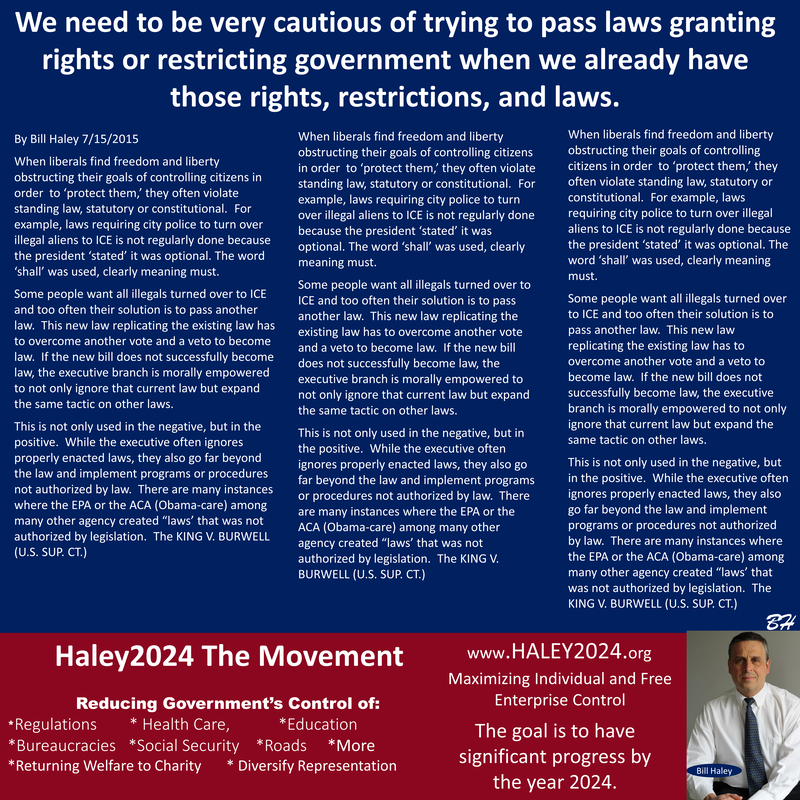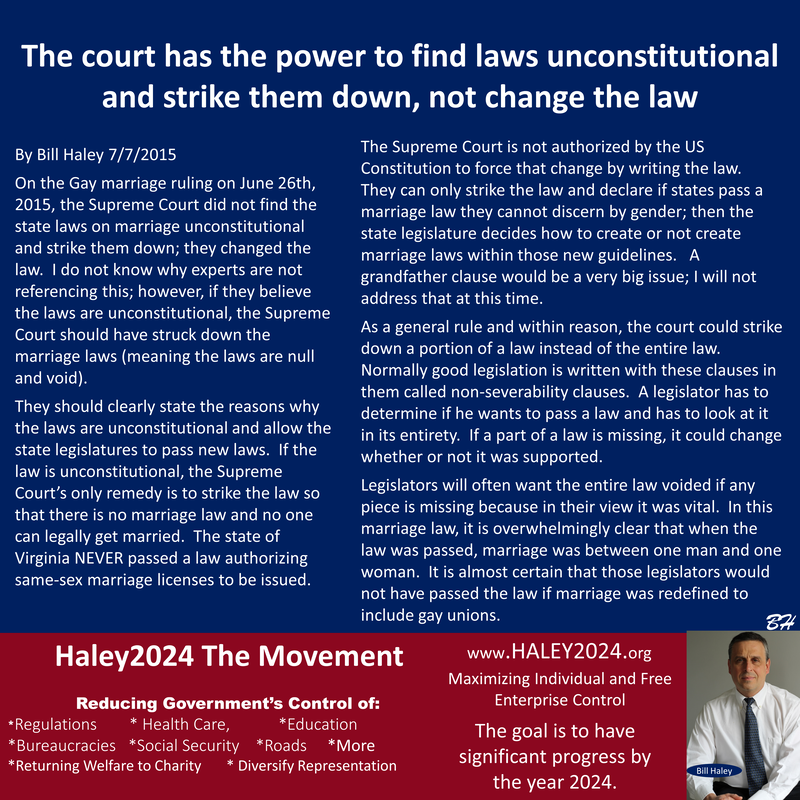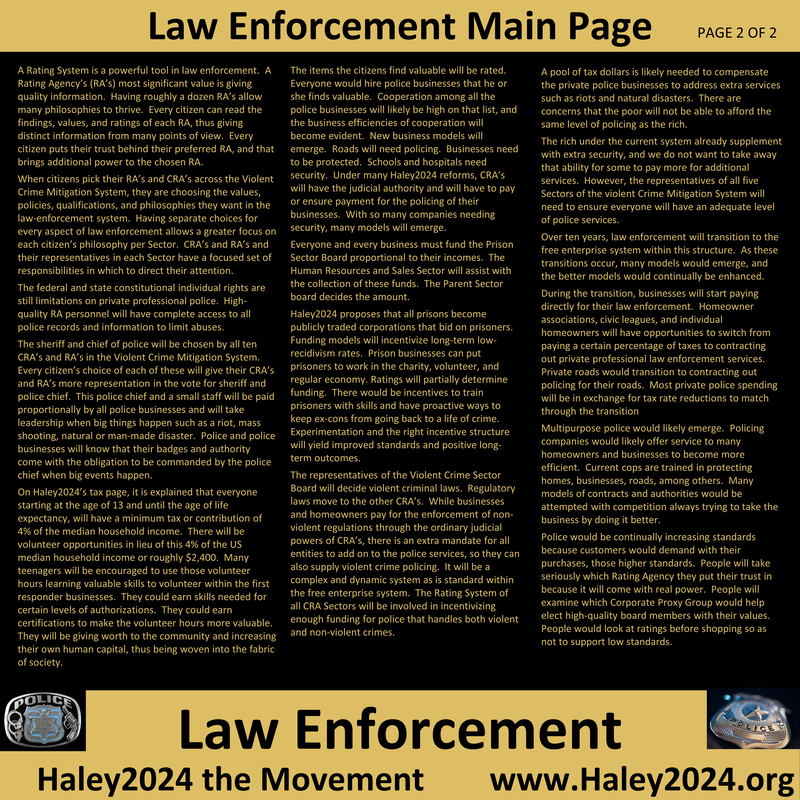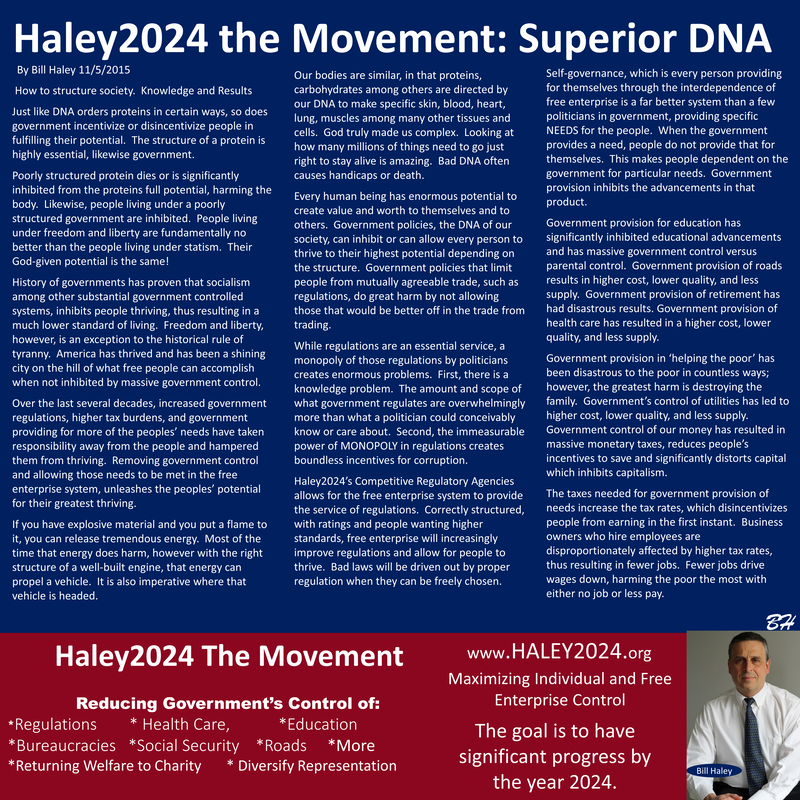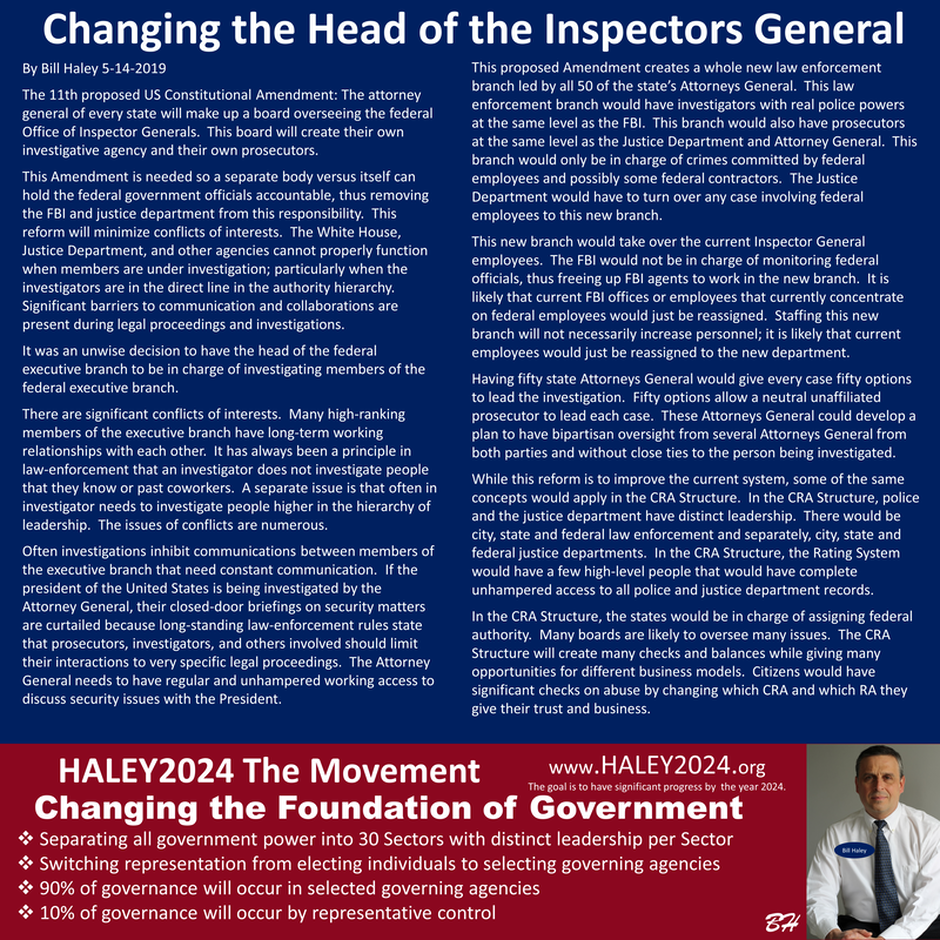|
|
This Amendment is needed so a separate body versus itself can hold the federal government officials accountable, thus removing the FBI and justice department from this responsibility. This reform will minimize conflicts of interests. The White House, Justice Department, and other agencies cannot properly function when members are under investigation; particularly when the investigators are in the direct line in the authority hierarchy. Significant barriers to communication and collaborations are present during legal proceedings and investigations.
|
|
There are significant conflicts of interests. Many high-ranking members of the executive branch have long-term working relationships with each other. It has always been a principle in law-enforcement that an investigator does not investigate people that they know or past coworkers. A separate issue is that often in investigator needs to investigate people higher in the hierarchy of leadership. The issues of conflicts are numerous.
|
|
Often investigations inhibit communications between members of the executive branch that need constant communication. If the president of the United States is being investigated by the Attorney General, their closed-door briefings on security matters are curtailed because long-standing law-enforcement rules state that prosecutors, investigators, and others involved should limit their interactions to very specific legal proceedings. The Attorney General needs to have regular and unhampered working access to discuss security issues with the President.
|
|
This proposed Amendment creates a whole new law enforcement branch led by all 50 of the state’s Attorneys General. This law enforcement branch would have investigators with real police powers at the same level as the FBI. This branch would also have prosecutors at the same level as the Justice Department and Attorney General. This branch would only be in charge of crimes committed by federal employees and possibly some federal contractors. The Justice Department would have to turn over any case involving federal employees to this new branch.
|
|
This new branch would take over the current Inspector General employees. The FBI would not be in charge of monitoring federal officials, thus freeing up FBI agents to work in the new branch. It is likely that current FBI offices or employees that currently concentrate on federal employees would just be reassigned. Staffing this new branch will not necessarily increase personnel; it is likely that current employees would just be reassigned to the new department.
|
|
Having fifty state Attorneys General would give every case fifty options to lead the investigation. Fifty options allow a neutral unaffiliated prosecutor to lead each case. These Attorneys General could develop a plan to have bipartisan oversight from several Attorneys General from both parties and without close ties to the person being investigated.
|
|
While this reform is to improve the current system, some of the same concepts would apply in the CRA Structure. In the CRA Structure, police and the justice department have distinct leadership. There would be city, state and federal law enforcement and separately, city, state and federal justice departments. In the CRA Structure, the Rating System would have a few high-level people that would have complete unhampered access to all police and justice department records.
In the CRA Structure, the states would be in charge of assigning federal authority. Many boards are likely to oversee many issues. The CRA Structure will create many checks and balances while giving many opportunities for different business models. Citizens would have significant checks on abuse by changing which CRA and which RA they give their trust and business.
|



